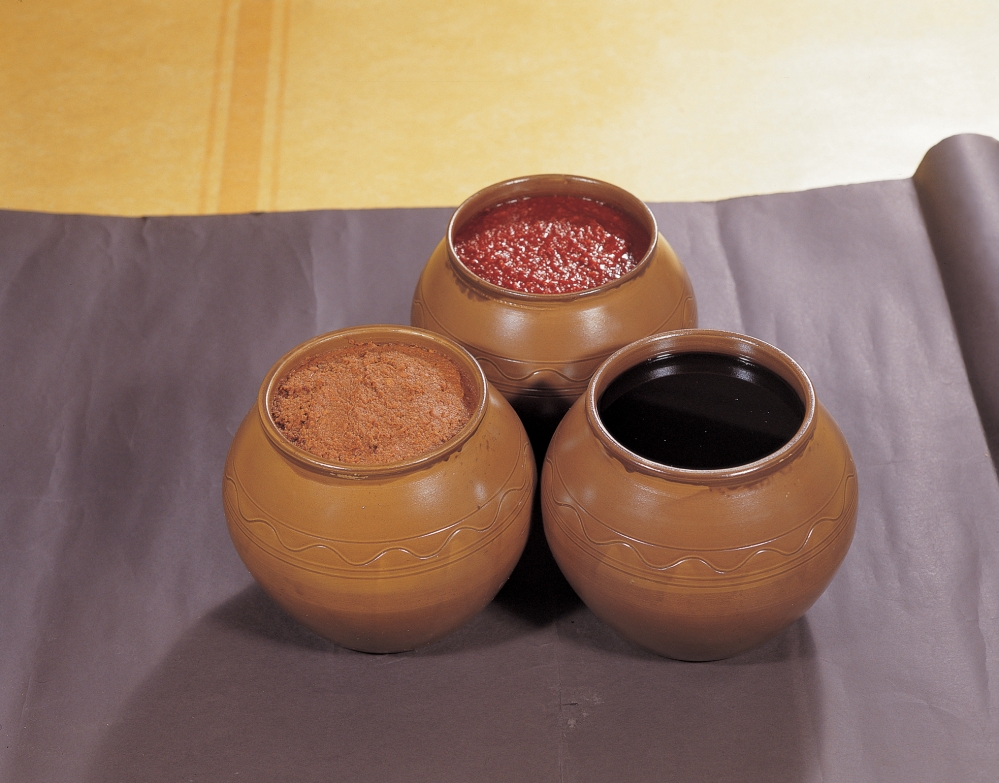Introduction to Korean Pastes (Jang)
Written by Cho Namhee
Korean pastes (jang) are the basis of Korean cuisine. Whenever you visit a Korean restaurant, it will have either dishes based on pastes or serve pastes as a sauce to enhance the taste. Out of over two hundred different kinds of pastes made and eaten in Korea, doenjang (soybean paste) and ganjang (soy sauce) are the most conventional and widely consumed of them all. Soy sauce may be universal to Asian cuisine; however, bean paste is more specific to Korea, and the procedure of making it adds another layer of uniqueness.
March, often the first full month of the lunar year, was traditionally the time when Korean families got together and made various kinds of pastes. Just a few decades ago, it was a common sight to see blocks of dried fermented soybean paste (meju) dangling under the eaves of roofs or on verandas. However, such sights can only be found in rural areas nowadays, not only because the blocks diffuse a strong odor but also because it takes time and energy to make them.

Briefly, the procedure for making a jangdok (crock) of bean paste has several steps. The first and most important step is to prepare the meju. To begin, soybeans are washed, boiled, and chunked to be compressed and shaped into brick-like blocks. After drying them in a cool, shaded area, the hardened blocks are then typically tied with rice straw under the eaves of the house to air-dry. During the weeks of air-drying, the beans of the blocks are fermented, after which they are finally washed and sun-dried for use.
When the blocks are ready to be used, various amounts of brine are put into a jangdok with the meju to make portions of ganjang or doenjang on demand. The more brine put into the jangdok, the more ganjang can be made from it. For further fermentation of the mixture, the jangdok should then be closed and placed in the best possible spot for sunlight. It normally takes 70 to 80 days for a jangdok prepared on the first day of the lunar calendar to be fermented, but this period gets shorter when they are prepared closer to summer. The juice in the jangdok can be used as sauce, and the fermented blocks can be removed and mixed with additional salt to make doenjang.
The condiments made out of soybean vary by region and by ingredients put into the jangdok. Depending on the climate of the region, the amount of wind, and the changes in sunlight, the taste of the soybean blocks within a jangdok can vary significantly. This delicate procedure involving both environmental and human factors is the legacy of our Korean ancestors. This introduction is only the tip of the iceberg when it comes to Korean pastes, but hopefully this helps readers understand why there is so much variety to Korean sauces.
The Author
Cho Namhee currently studies communication at Chonnam National University.







